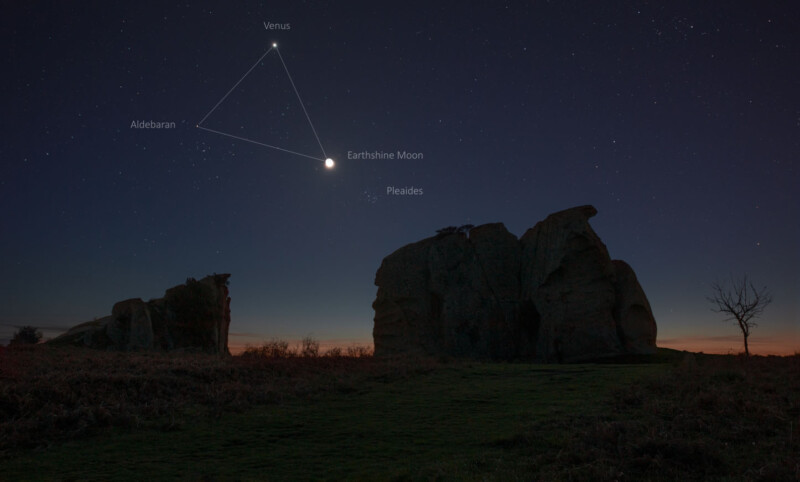Photographer’s ‘Stellar Flower’ Shows Night Sky Changes in 360 Degrees

A creative photographer used ancient and mythical rocks as the basis of a 360-degree “stellar flower” image that shows the passage of day into night and the setting of Venus and the Moon.
Dario Giannobile created Twilight in a Flower by amalgamating two well-known landscape photography techniques — timelapse star trails and little planet.
Giannobile tells PetaPixel that as far as he knows, it is a new technique that he is the first to develop which he calls a stellar flower.
“In the star trail, the merging of multiple images into a single frame allows the apparent movement of the stars to be reconstructed during the night, crystallizing the passage of time into a single story where the scenery is normally unchanged,” explains Giannobile.
“In a little planet, however, a 360-degree landscape view is presented by reshaping it into the shape of a small globe. It is formed from the original image through a distortion that, for simplicity, we will call circular.
“This is how the stellar flower came to life from these two fundamental elements: the visualization in a single frame of the passage of time typical of star trails and the 360-degree visualization typical of little planet.”
Creating the Stellar Flower
Giannobile chose Argimusco’s Rocks in Sicily, Italy as his location. Dubbed the Sicilian Stonehenge, it’s speculated the megaliths were a site for sacred rites or a place for astronomical observations for the people of antiquity.

The landscape, and two rocks in particular, served as the basis for the photographer’s stellar flower image — with the 360-degree technique transforming the rocks into flower petals.
“By recording the passage of time (more or less half an hour) and the transition from twilight to night, it was possible to create a new star flower,” explains Giannobile.
“The image is composed of 16 individual photographs. The rocks of Argimusco have distorted forming a double sequence of petals.
“By combining the almost linear trajectory of the setting of Venus and the Moon with the circular distortion of the image, a sequence is obtained that takes the form of a spiral that winds around itself twice.
“The first rotation is given by Venus, the second by the Moon until it disappears behind the large rock.”

Giannobile used a Canon 6D with a Sigma 24-35mm attached in aperture priority mode. He varied the ISO “in order to maintain a homogeneous exposure and control the exposure times to avoid recording the movement of the stars.”
NASA picked the impressive shot for its Astronomy Picture of the Day feature. More of Giannobile’s work can be seen on his Instagram and his website.
Image credits: All photos by Dario Giannobile.